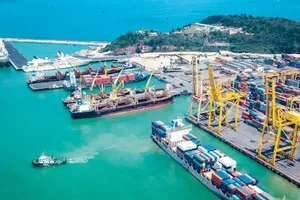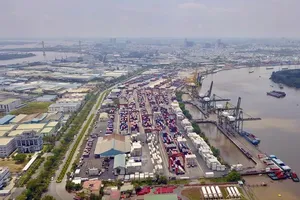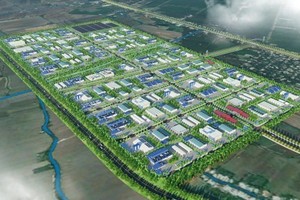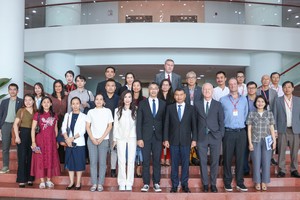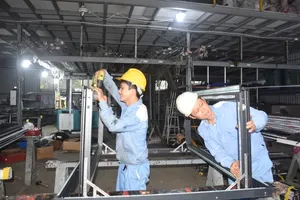
This proposal is grounded in the strategic imperative to align these entities' performance with the national economic growth target, projected to be 8 percent or more.
The Ministry of Industry and Trade has developed detailed growth scenarios for 2025. Ministries, sectors, and localities across the country are all working to design growth projections for their respective areas. For example, the ministry has set an ambitious export growth target of 12 percent for the full year. To achieve this, they have crafted a scenario with the following quarterly targets including 11.9 percent increase in quarter 1, 11.7 percent increase in quarter 2, 12.7 percent increase in quarter 3 and 12.1 percent increase in quarter 4.
An examination of the industrial production growth scenarios, characterized by quarterly increases of 6.6 percent, 7.6 percent, 11.2 percent, and 12.5 percent, reveals a projected annual growth rate of 9.5 percent, thus confirming alignment with the established national target. The implementation of national economic policy, specifically Resolution No. 25/NQ-CP, is further substantiated by the decision of 40 localities to independently establish GRDP growth targets that meet or surpass the national benchmarks, indicating a convergence of national and regional economic objectives while also alluding to potential regional variations in strategic economic planning.
The initial two months of the fiscal year demonstrate robust economic performance, characterized by significant quantitative gains across key sectors. Specifically, import-export turnover experienced a 12 percent increase, with export and import growth rates recorded at 8.4 percent and 15.9 percent, respectively. This resulted in an estimated trade surplus of US$1.47 billion. Furthermore, the Industrial Production Index (IIP) rose by 7 percent, and total retail sales and consumer service revenue saw a 9.4 percent increase, indicating broad-based economic expansion.
State budget revenue in the first two months reached 25.4 percent of the estimate, up 25.7 percent over the same period, ensuring resources for development investment, social security, national defense, security, production and business support and political tasks. More importantly, the revenue structure is moving towards sustainability, with the proportion of domestic revenue estimated at 27.3 percent of the estimate, up 28.9 percent against the same period last year.
The total registered foreign investment capital reached over $6.9 billion, a 35.5 percent increase year-over-year. This figure, which reflects both objective and subjective factors, demonstrates the continued appeal of the market. Moreover, realized capital grew nearly $3 billion up 5.4 percent during the same period.
The observed macroeconomic stability, characterized by controlled inflation and guaranteed major balances, provides a favorable foundation for economic growth. This stability, coupled with positive trends in production and business activities, suggests the economy is poised to enter an accelerated growth phase.
However, several structural weaknesses within the economy persist. The key drivers of economic growth have yet to achieve a significant breakthrough proportional to the demands of accelerated development. Additionally, the economy's capacity to effectively absorb capital remains limited, and business confidence remains fragile. Notably, within the past two months, only 20,800 enterprises registered for new establishment, reflecting an 8.92 percent decline compared to the same period last year.
The highly open economy continues to face adverse external impacts. While domestic purchasing power has somewhat improved, it remains generally sluggish. Competitive pressures are rising in both export and domestic markets, and unpredictable policies from the U.S. government are likely to create difficulties for production and exports. Although economic data for the first two months shows a positive trend, the path forward will require substantial effort.
The target of achieving a GDP growth rate of 8 percent or higher can only be realized if, and only if, each industry, sector, and locality develops a feasible growth strategy and successfully implements it.




